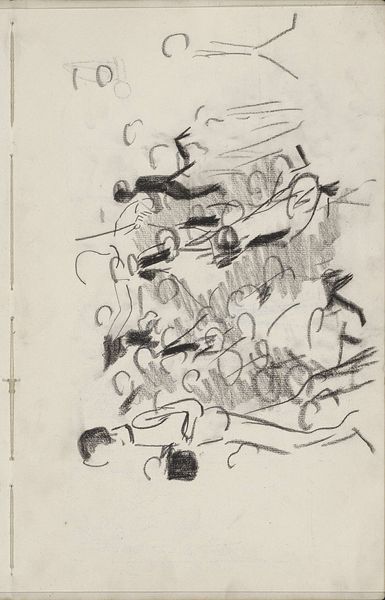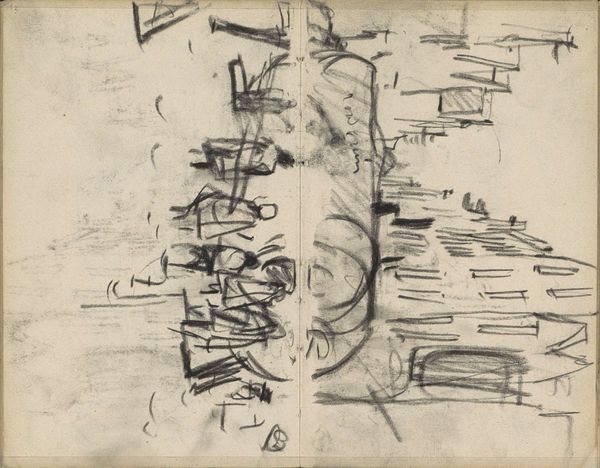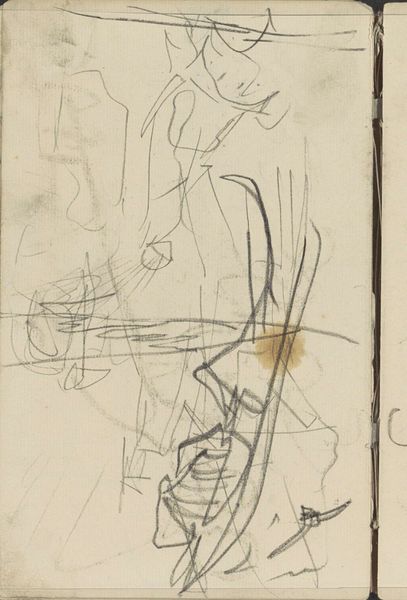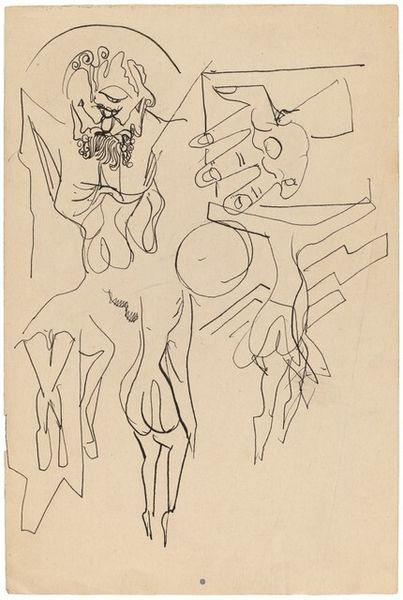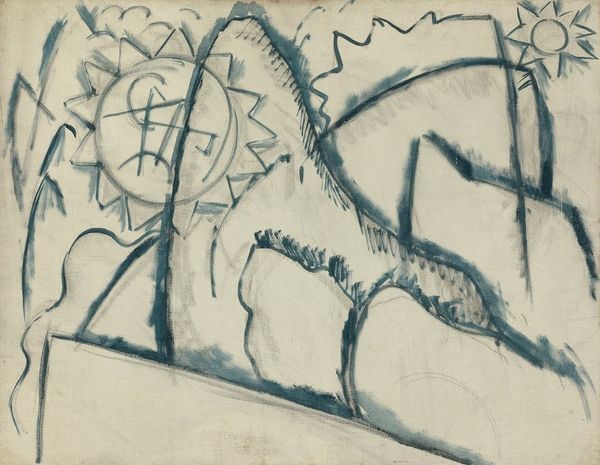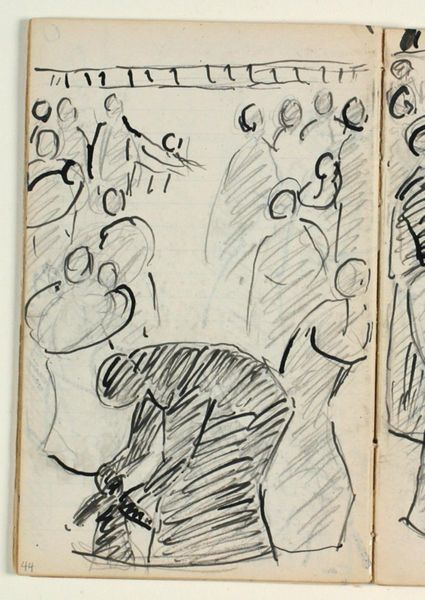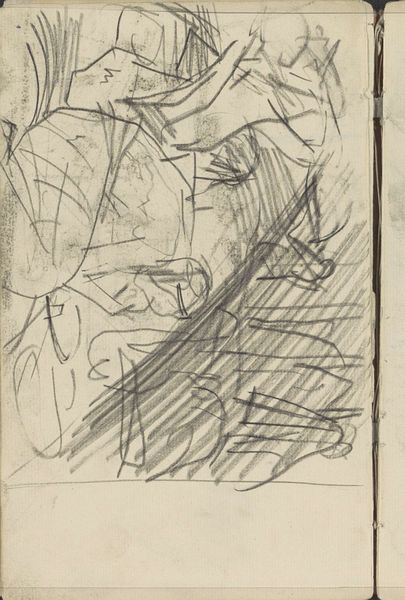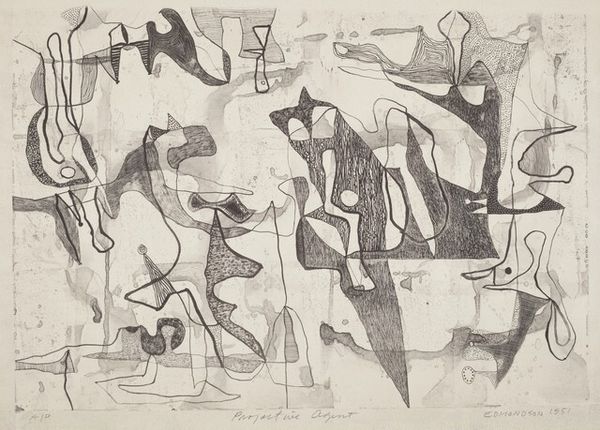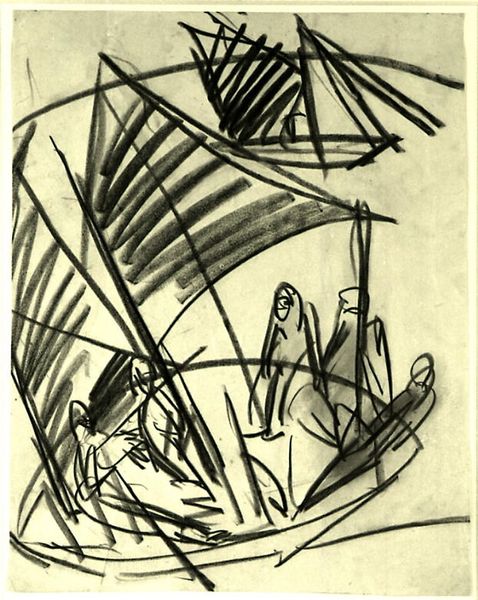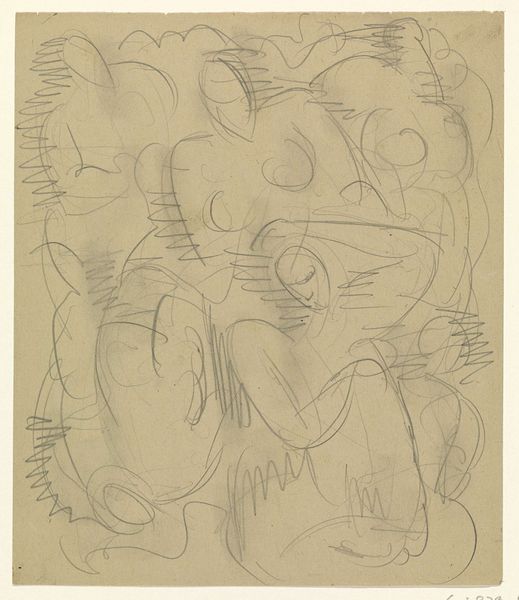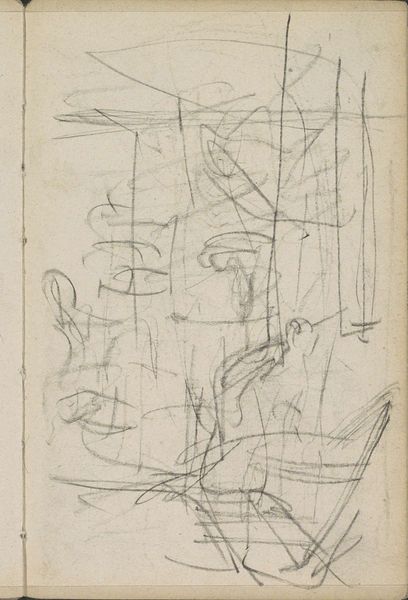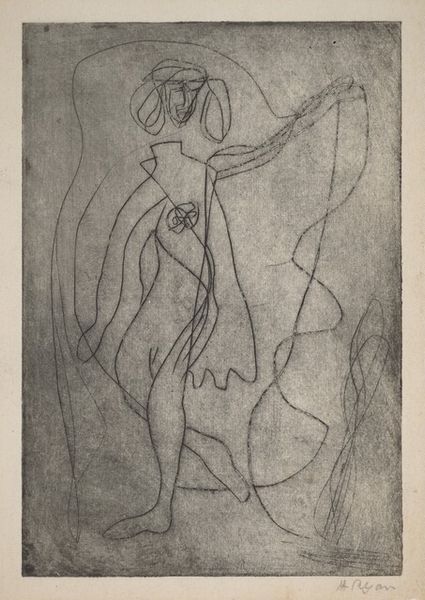
drawing, paper, ink
#
abstract-expressionism
#
drawing
#
paper
#
ink
#
abstraction
#
line
Copyright: Public domain Belarus
Curator: Looking at this piece, I’m immediately struck by a sense of incompleteness, like a sketch barely hinting at something larger. Editor: That’s interesting. This drawing in ink on paper is titled "Żniwiarki", or "Reapers," created in 1950 by Władysław Strzemiński. Considering that historical context, does that alter your reading? Curator: It certainly adds another layer. Given its title and Strzeminski’s pursuit of Unism, it’s difficult not to see this as a response to Socialist Realism and its demand for art that clearly promoted party ideology. The lines evoke bodies, the gestures of labour, but they’re dissolved, fractured, resisting simple representation. Editor: Absolutely. And it’s important to note Strzeminski’s own experiences during the war and the increasing oppression he faced under the Stalinist regime. He lost his teaching position due to his modernist ideas, his work was banned, and he ultimately suffered greatly in those years. Curator: So, “reapers”, or harvesters, becomes less about idyllic labor and more about forced collectivism and perhaps the artist’s own cultural death. The very act of abstraction, of refusing a straightforward, representational style, was a political act. It’s a form of resistance etched in every jagged line and dissolved form. The image resonates, then, with wider themes of cultural suppression and artistic survival. Editor: Exactly. How do museums and institutions decide to preserve the more critical readings of the time? Do you believe this piece is essentially social commentary disguised in abstraction? Curator: Without a doubt. The emptiness, the haunting quality…it becomes a testament to the silencing of dissenting voices and the human cost of totalitarian ideology. Editor: What an insightful discussion! This piece urges us to revisit the relationship between aesthetics, political struggle and how these narratives interact within institutions like ours.
Comments
No comments
Be the first to comment and join the conversation on the ultimate creative platform.
